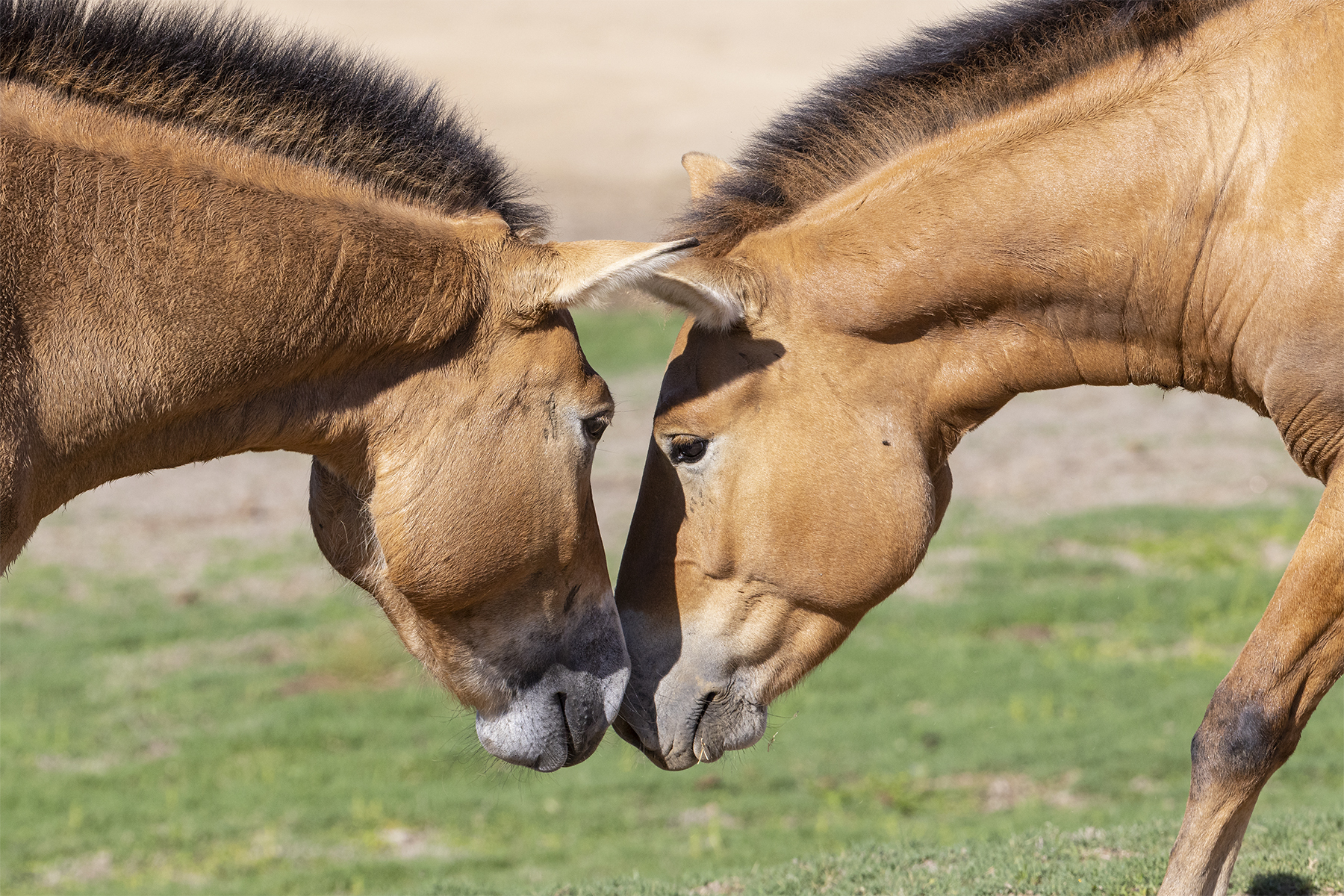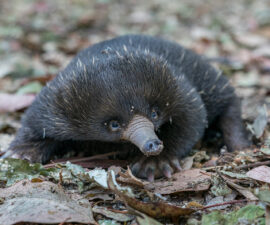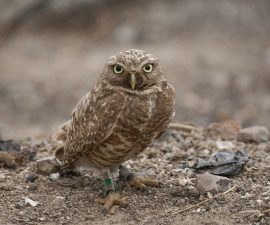BY Oliver Ryder Ph. D. and Elyan Shor, Ph.D.
This story was written for the International Union for Conservation of Nature (IUCN). The original post can be found here.
In 1980, the cells of a male Przewalski’s horse (Equus przewalskii) living at the Minnesota Zoo were stored in San Diego Zoo Wildlife Alliance’s cryobank, the Frozen Zoo®. The cells would remain frozen—dormant, but alive—for more than 40 years, all the while sustaining hope for recovery of a species that was once extinct in the wild. The prescient effort to bank these cells was rewarded in 2021 with the birth of a foal named Kurt: a clone generated from the cells stored in the Frozen Zoo®. His birth restores valuable genetic diversity that has not been adequately incorporated into the extant population. A second cloned foal born in 2023 further supports the goal of restoring the greatest possible extent of the species’ genetic diversity in the managed population and will benefit restoration of the species in its native habitat.
These foals are a testament to the power of assisted reproductive and genetic technologies; but equally important, they also exemplify the necessity—and the immense potential—of biobanking in conservation.
Biobanking is the preservation of biological materials, such as cryopreserving cells, gametes, and tissues. By freezing viable materials, we secure future access to genetic diversity and simultaneously aggregate a vast library of biological information that will be available to generations of future scientists. Access to cryobanked cells and other banked biomaterials has been crucial to studies of ecology, evolution, genomics, and the health of wildlife, fostering an unprecedented understanding of life on earth. These materials also serve as the foundation for a pivotal new set of conservation options—including cloning, as well as the many more technological advances that can be anticipated—that afford us the opportunity to safeguard genetic capital, support population sustainability, and reduce extinction risk.

With these applications, biobanking represents a bridge between in situ and ex situ conservation efforts, making it an inherent part of the IUCN Species Survival Commission’s (IUCN-SSC) One Plan approach. The Przewalski’s horse is a notable exemplar: the combination of human care and revived genetic variation ex situ has laid the path towards one day reintroducing genetically diverse individuals back into herds in situ, essentially creating a continuum between managed and wild populations.
Beyond wildlife conservation, the benefits of biobanking also extend to people around the world. Biobanks support the wellbeing of wildlife, ecosystems, and humans; these collections are thus an integral component of the One Health approach and contributors to several of the United Nations Sustainable Development Goals, as well as to the targets of the Convention on Biological Diversity. Banked collections serve as an assurance in protecting species, and by extension, protecting the roles of these species in their environments and the balance of our ecosystems—this directly affects human health. But further, biobanks are a repository of high-quality samples, which can be collected on a broad scale, that are an invaluable resource in matters of public health. For example, studying these samples helps us understand the mechanisms of disease, providing an avenue for accelerated diagnostics and treatment discovery. These collections could therefore be key in halting the spread of zoonotic diseases and preventing pandemics.
There is a growing recognition of the urgency of biobanking. In addition to the One Plan approach, international treaties and resolutions recognize biobanking as a critical component of biodiversity conservation. The Convention on Biological Diversity’s Nagoya Protocol and Kunming-Montreal Global Biodiversity Framework propel the topic of biobanking to the forefront of global discussions about conservation, while also importantly emphasizing the need to establish fair and equitable biobanking access, management, and benefits-sharing. IUCN’s 2020 Resolution 079 (WCC-2020-Res-079) reiterates the necessity of adopting the One Plan approach, while also specifically calling for the establishment of a collaborative global biobanking network.

Skeptics of the value of biobanking may argue that our resources could be better invested in conserving living individuals and populations, instead of their cells and tissues. However, these are not mutually exclusive efforts. Cryopreservation is not a replacement for landscape- or population-level conservation activities; rather, it complements these approaches, and can, in fact, be built into programs on a global scale. Genetic and assisted reproductive technologies are still undergoing further development; however, when it comes to mitigating losses of genetic diversity, biobanking is the conservation intervention that presents the lowest risk today for the highest potential impact in the future—this is an investment surely worth making.
The calls for biobanking action—championed by the IUCN-SSC Animal Biobanking for Conservation Specialist Group—center on worldwide collaboration and inclusive participation. First, although several wildlife organizations already manage or contribute to biobanks, there are unmet opportunities for further contributions from zoos and aquaria. The Frozen Zoo®—part of San Diego Zoo Wildlife Alliance’s Wildlife Biodiversity Bank, and the most extensive resource of its kind, with thousands of viable cell lines and gametes from human-managed and wild species around the world—contains cells from 5% of threatened mammals, birds, amphibians, and reptiles on the Red List. However, nearly 17% of these species are represented in zoological parks around the world. Though zoos and aquaria have long been recognized for their role in ex situ conservation, their impact could grow to include contribution of precious samples to worldwide biodiversity banking efforts.
Whether biobanks are affiliated with a zoological park or any other institution, cooperation amongst them is paramount. To build the most useful and accessible database of information in support of the world’s biodiversity, we must call for a culture of transparency around the existence, quantity, and location of banked samples. A global network of communication and exchange is essential to effective management of collections.

Finally, we must ensure that all these efforts are equitable, just, and inclusive. These are irrefutable values in the preservation and access of genetic resources, as well as for the knowledge and benefits that stem from their use. The recognition of the rights and needs of Indigenous peoples and local communities is explicitly promoted by the Nagoya Protocol, Kunming-Montreal Global Biodiversity Framework, Animal Biobanking for Conservation Specialist Group, and Earth BioGenome Project. Indigenous peoples and local communities should be involved at the onset, engaged through discussions, and their rights, sovereignty, and traditional knowledge must be recognized. On a global basis, the ability to safeguard biodiversity will also be immeasurably advanced by investing in local biobanking resources, training, and facilities.
With human activities driving precipitous biodiversity losses and inciting the planet’s sixth mass extinction, the need to save genetic resources is more urgent than ever. We encourage the conservation community—ranging from individuals to institutions—to consider incorporating sample collection for the purpose of biobanking into their efforts, and to do so with collaboration and inclusion in mind.
Posted in San Diego Zoo Wildlife Alliance’s Frozen Zoo® is the intriguing quote, “You must collect things for reasons you don’t yet understand.” Though we may not understand all these reasons today, we certainly understand this: biobanking is a failsafe to safeguard biodiversity while it’s still extant, and a source of actionable hope to recover biodiversity when it’s lost.





